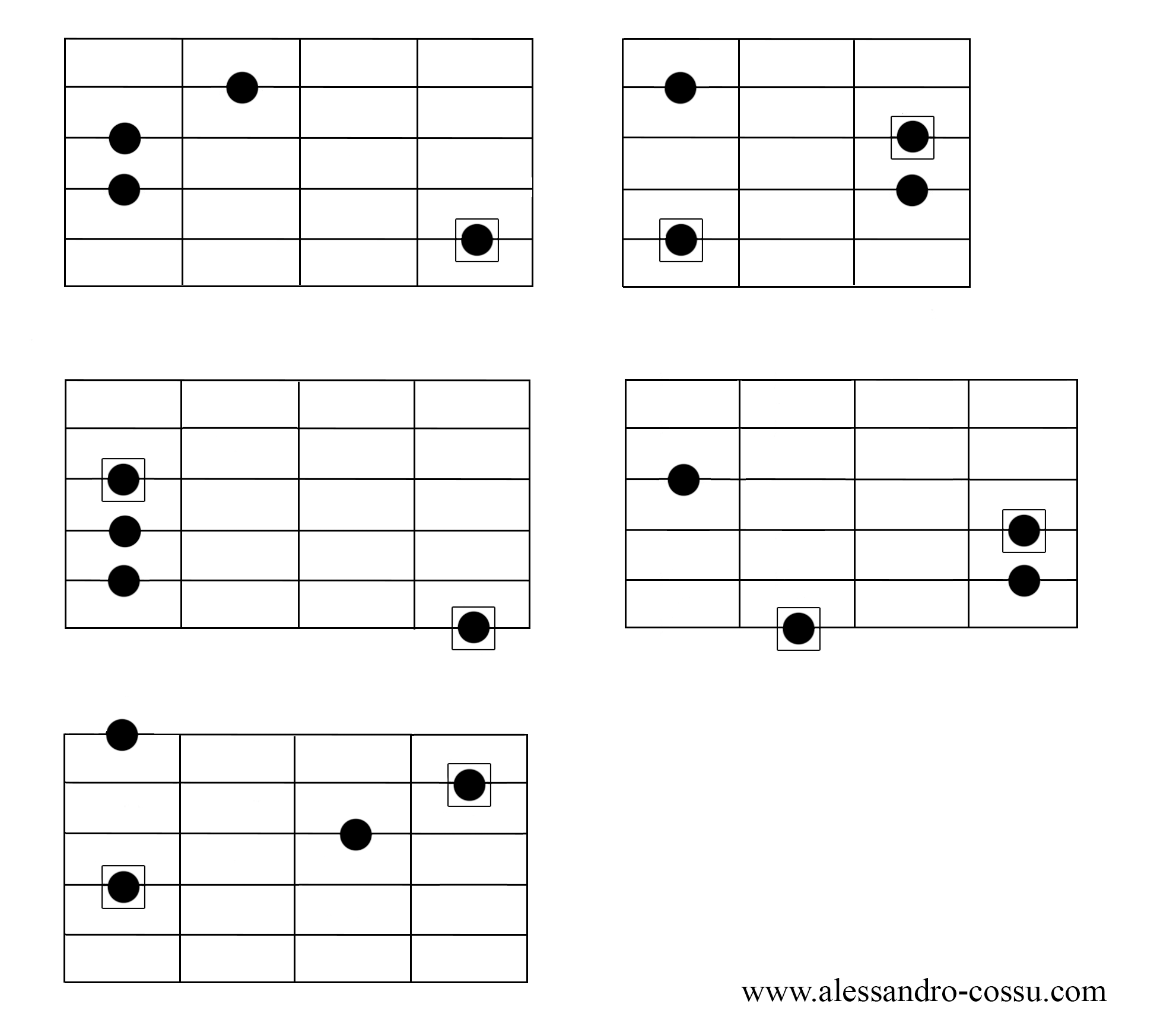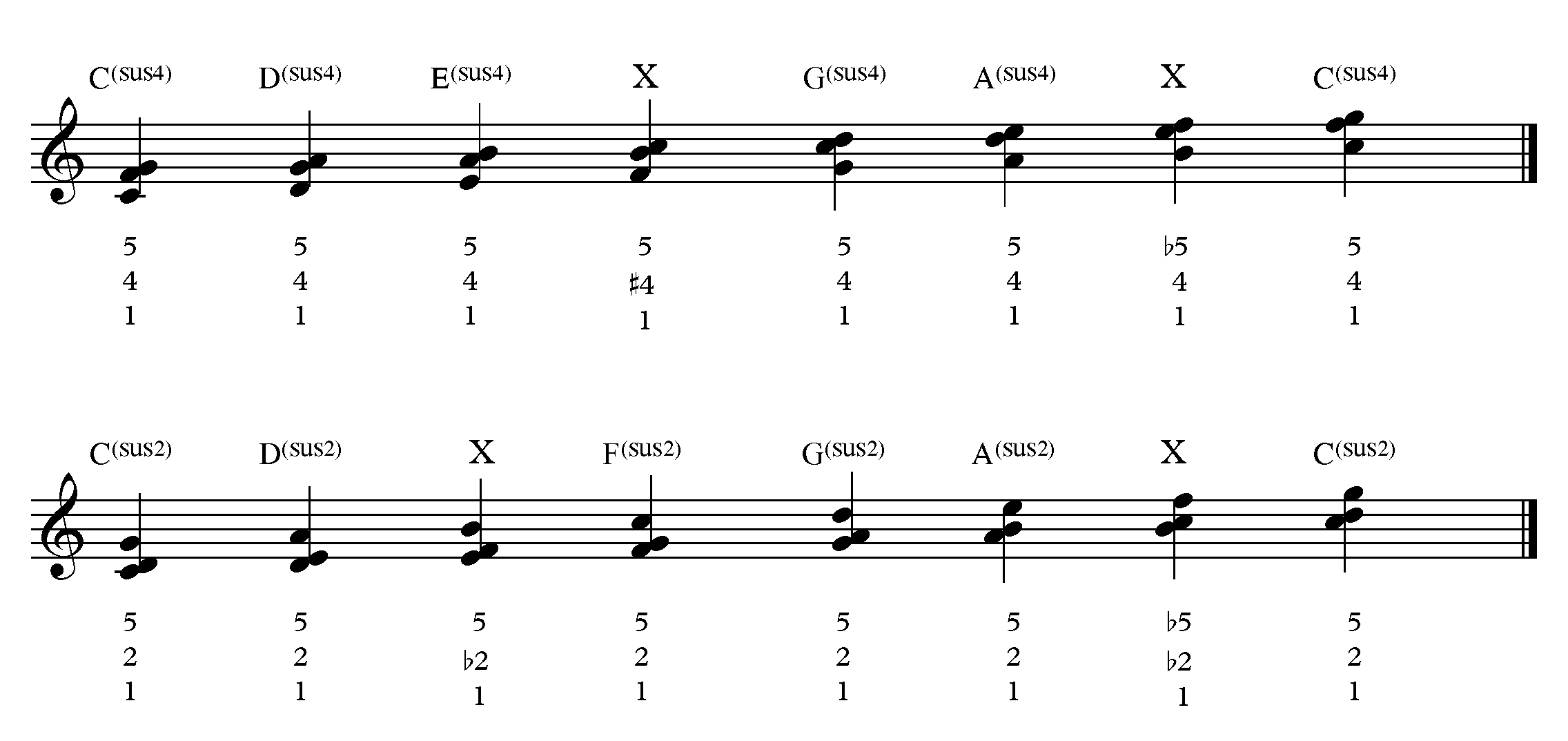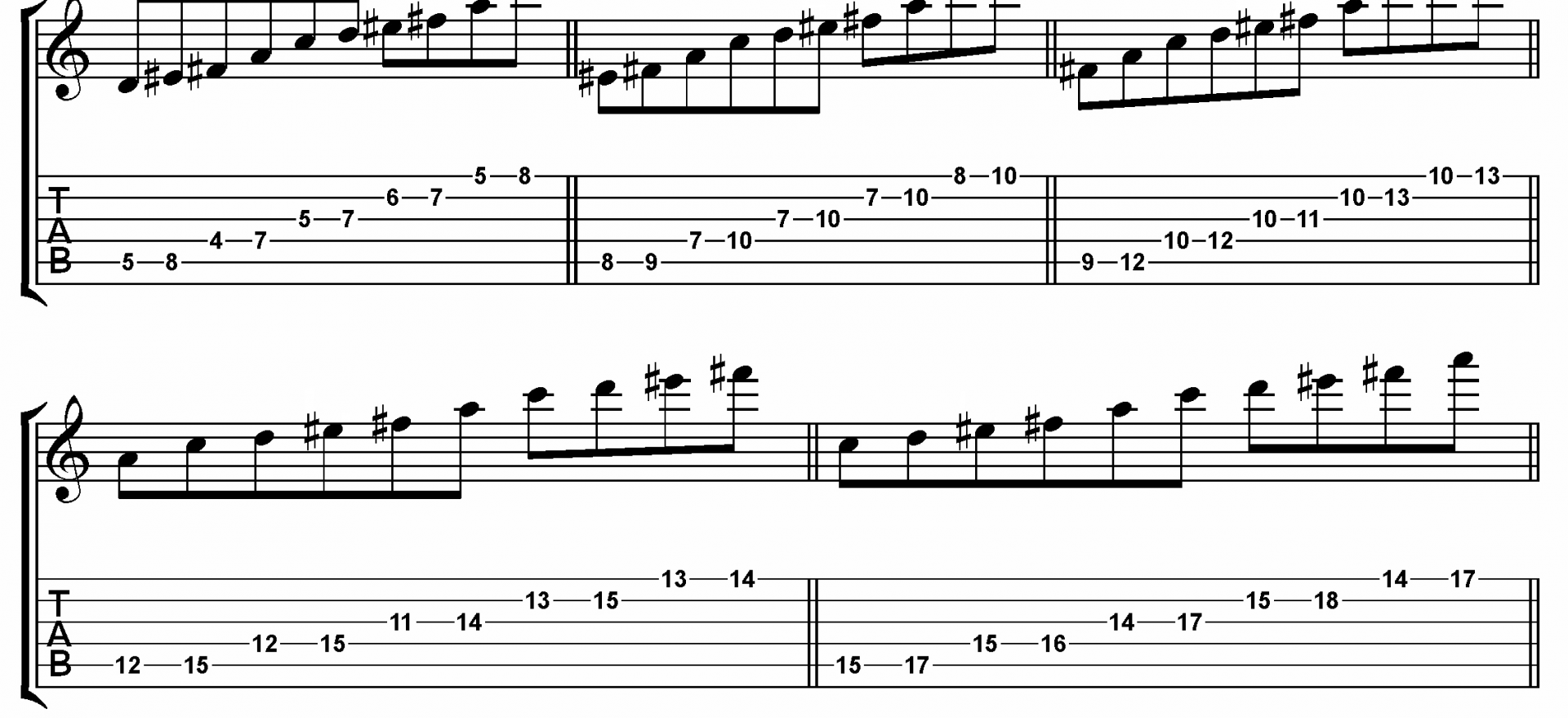
SUSPENDED TRIADS (FINGERINGS)
11 September 2020
SUSPENDED TRIADS
12 September 2020What Is Quartal Harmony?
When we talk about triads we usually refer to chords made by a fundamental note (or root), its third and its fifth.
This type of chords is the building block of tonal harmony, whose birth and development was historically influenced by the idea of considering these “harmonic formations” on their own, instead of seeing them as the consequence of different voices interweaving.
Centuries passed and composers felt the need to get out of the “control” of the tonic and traditional harmonic functions, so they had to get rid of triads; one way to do that was to use chords made from the superimposition of intervals of fourth instead of third. That’s what we call “quartal” harmony.
These chords, that have been also used in Classical music from the late XVIII Century, found great luck especially among jazz musicians, starting from modal experiences, whose harmonies and melodic linea were trying to contrast those tonal, still the reference until the bebop era.
That’s basically an harmonic thought (tonal) developed with a pre-harmonic (modal) spirit.
Just as we did for triads, let’s harmonize some of the most used scales using only fourth intervals.
(Fingerings can be found here)
Harmonizing the Diatonic Scale
When we harmonize the diatonic scale we find three families of triads (major, minor, diminished) and four seventh chords (Major, Dominant, minor, half-diminished).
Harmonizing in fourth gives us also three families of three-notes chords and four families of four notes.

From a given fundamental tone, if we add two intervals of a 4th, we get the 4th and 7th (we can label these type of chord as 1 – 4 – 7).
Another 4th interval from the 7th (see the second part of the above image) and we have a chord as 1 – 4 – 7 – 3.
Of course these chords are not all exactly the same on every scale degree because some have a major third and some the minor, some a perfect fourth and some an augmented fourth and so on. We could think of the relative modes to know what kind of intervals we are dealing with in every case:
| Ionian | 1 – 4 – 7 – (3) |
| Dorian | 1 – 4 – ♭7 – (♭3) |
| Phrygian | 1 – 4 – ♭7 – (♭3) |
| Lydian | 1 – #4 – 7 – (3) |
| Mixolydian | 1 – 4 – ♭7 – (3) |
| Aeolian | 1 – 4 – ♭7 – (♭3) |
| Locrian | 1 – 4 – ♭7 – (♭3) |
On the guitar we can play them this way:


We could now do the same with other two scales that are broadly used: harmonic and melodic minor.
Modes of the Harmonic Minor

| Hypoionian | 1 – 4 – 7 – (♭3) |
| Locrian ♮6 | 1 – 4 – ♭7 – (♭3) |
| Ionian #5 | 1 – 4 – 7 – (3) |
| Dorian #4 | 1 – #4 – ♭7 – (♭3) |
| Phrygian Dominant | 1 – 4 – ♭7 – (3) |
| Lydian #2 | 1 – #4 – 7 – (3) |
| Superlocrian | 1 – ♭♭4 – ♭7 – (♭3) |

Modes of the Melodic Minor

| Ionian♭3 | 1 – 4 – 7 – (♭3) |
| Phrygian ♮6 | 1 – 4 – ♭7 – (♭3) |
| Lydian #5 | 1 – #4 – 7 – (3) |
| Lydian Dominant | 1 – #4 -♭ 7 – (3) |
| Mixolydian ♭6 | 1 – 4 – ♭7 – (3) |
| Locrian ♮2 | 1 – 4 – ♭7 – (♭3) |
| Superlocrian Diminished | 1 – ♭♭4 – ♭7 – (♭3) |

And here there are the three scales compared:
| I | II | ♭III | III | IV | V | ♭VI | VI | VII | |
| Major | 1-4-7-3 | 1-4-♭7-♭3 | 1-4-♭7-♭3 | 1-♯4-7-3 | 1-4-♭7-3 | 1-4-♭7-♭3 | 1-4-♭7-♭3 | ||
| Harmonic minor | 1-4-7-♭3 | 1-4-♭7-♭3 | 1-4-7-3 | 1-♯4-♭7-♭3 | 1-4-♭7-3 | 1-♯4-7-3 | 1-♭♭4-♭♭7-♭3 | ||
| Melodic minor | 1-4-7-♭3 | 1-4-♭7-♭3 | 1-♯4-7-3 | 1-♯4-♭7-♭3 | 1-4-♭7-3 | 1-4-♭7-♭3 | 1-♭♭4-♭7-♭3 |
To conclude, here’s an example showing all the quartal chords of the three scales together starting from C:







